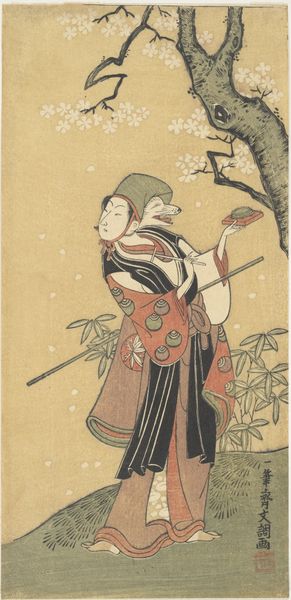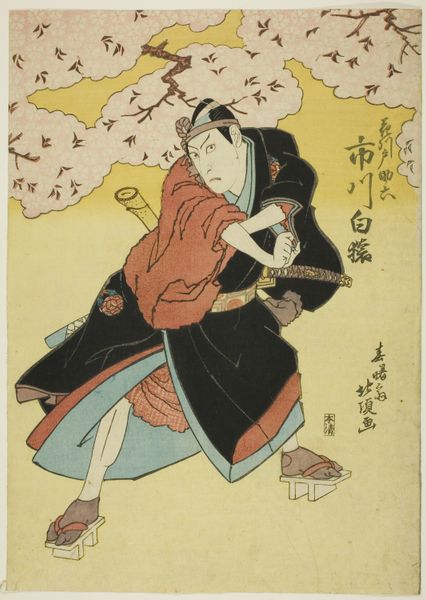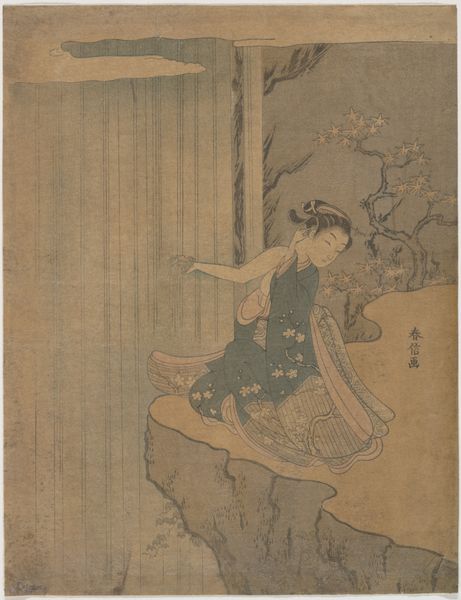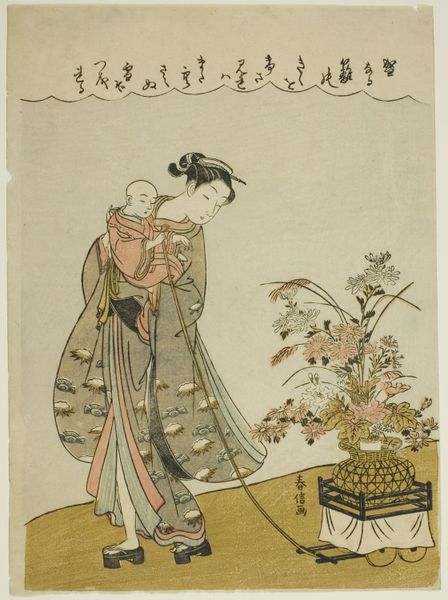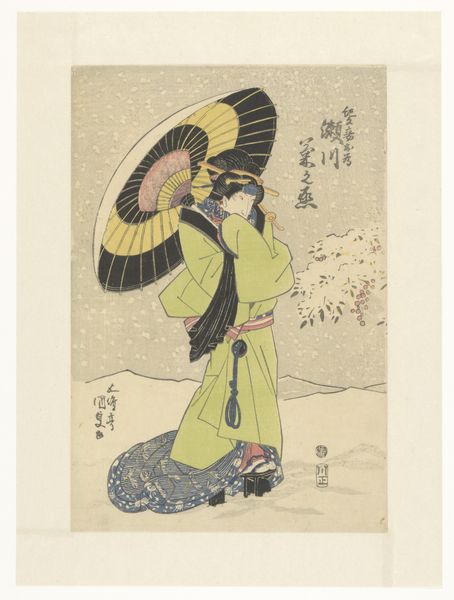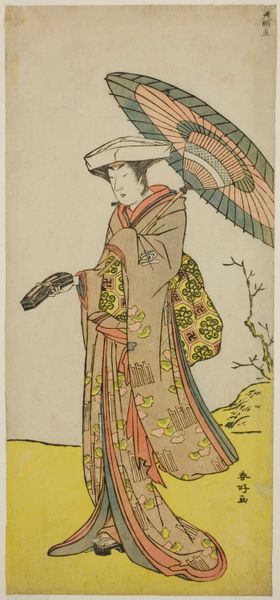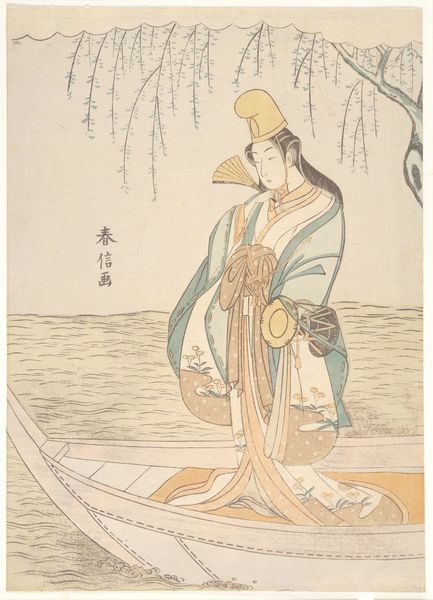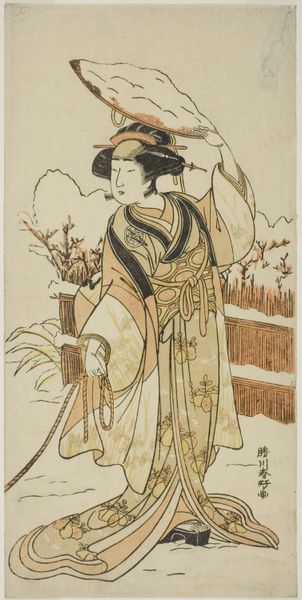
# print
#
asian-art
#
landscape
#
caricature
#
ukiyo-e
Dimensions: 10 1/2 × 7 3/4 in.
Copyright: Public Domain
Editor: So, this is *A Windy Day* by Suzuki Harunobu, a woodblock print from around 1767. There's a real sense of movement—the woman’s robes are billowing, and the willow tree is drooping. It’s a fairly simple composition, but so evocative! What catches your eye about it? Curator: I immediately think about the representation of women in Ukiyo-e prints, and Harunobu's role in shifting that representation. Consider the context: Edo-period Japan was a rigidly structured society. Prints like these, though seemingly simple scenes, offered a window into idealized versions of contemporary life, often reflecting the rising merchant class and their desires. Editor: So it’s not just a pretty picture, it reflects social dynamics? Curator: Precisely. This print, and others like it, were commodities in a growing market for art consumed by a broader public. We also have to remember that these images were highly stylized. The woman is portrayed with specific conventions—her delicate features, her elaborate kimono—which signal her status and desirability. What do you make of the choice to depict her in this vulnerable, windswept state? Editor: Well, I suppose it humanizes her. It’s more relatable than an idealized portrait of a noble, perhaps. It adds to the drama of the composition as well. Curator: And consider the gaze. Her eyes are cast down. Does this communicate humility? Shyness? Or perhaps something more complex, a nuanced understanding of her role in a society that dictates how women should be seen? Editor: It's fascinating how much history can be read from such a small print! It makes you realize art is always communicating ideas about society, whether intentional or not. Curator: Exactly. Harunobu wasn't simply depicting a woman in the wind; he was participating in a larger cultural conversation about gender, class, and representation that's being recorded into Japanese society, influencing cultural dynamics of the time.
Comments
No comments
Be the first to comment and join the conversation on the ultimate creative platform.



